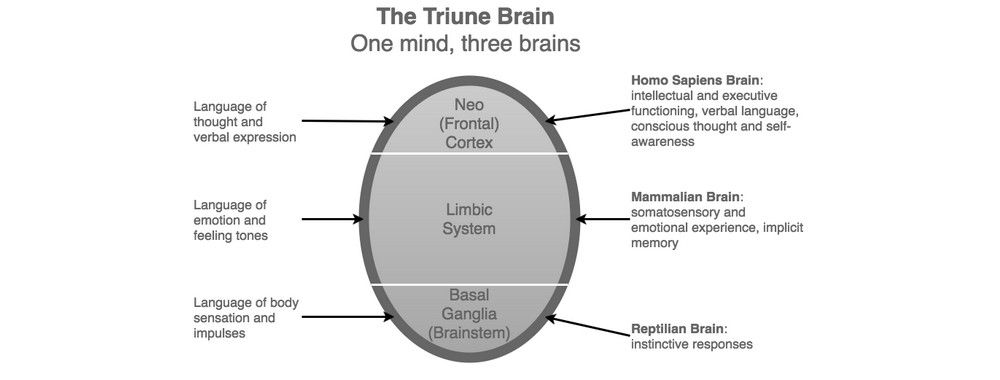In Norman’s book <Emotional Design: Why We Love (or Hate) Everyday Things, he contends that attractive products work better and proposes a framework of three emotion level.
Concepts

( https://www.interaction-design.org/literature/article/the-concept-of-the-triune-brain )
Norman’s framework derives from a simplified view of brain architecture by Paul MacLean. Like the graph above shows, the information processing levels corresponding roughly through prefrontal cortex, cerebellum and spine or midbrain basal ganglia. Specifically, the prefrontal cortex is the primal brain part, which acquired information first and responded fast and voluntary; the cerebellum is part of emotional brain, which is in charge of affective system; the brainstem is part of rational brain, which responsible for reflection and objective thought.
For example, when we are in danger, as an act of self-preservation, we must respond quickly. So, the prefrontal cortex is aroused and release chemicals throughout the body for preparing action. When we are watching a tragedy, the limbic system is stimulated and release chemicals to create sad emotion experience. Finally, when we are making decisions, the brainstem is activated to help us think.

In terms of cognition level, the information processing in brain could be interpreted to three levels as reactive, routine and reflective. In Norman’s framework of cognitive-emotion architecture, the three levels are visceral, behavioural and reflective.
The visceral level is the intuitive response to the sensory and visual aspects in the immediate level of processing. In this phase, there is no cognition involved and only rapid decisions about what is good, bad, safe or dangerous are made. The behavioural level mainly uses interaction design and usability practices to manage simple and everyday behaviours without fully elaborated or interpreted. The reflective level is the rationalization and intellectualization of products based on understanding and culture. These three levels are linked and influence one another when generating emotional experience.
Implements
- The visceral level refers to the first impression of a product. So, a beautiful design could help to attract people.
- The behaviour level refers to the usability of a product. When designing a product, we need to think more about the user experience.
- The reflective level refers to the sense-making of the product.
- A good product is able to understand and manage user expectation. Further question: How to balance beautiful and usability in design?
Reference
- ANDREAS KOMNINOS, Norman’s Three Levels of Design https://www.interaction-design.org/literature/article/norman-s-three-levels-of-design
- ANDREAS KOMNINOS, The Concept of the “Triune Brain” https://www.interaction-design.org/literature/article/the-concept-of-the-triune-brain
